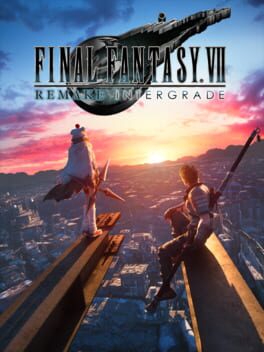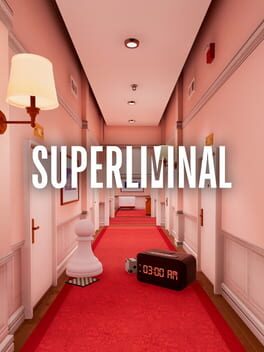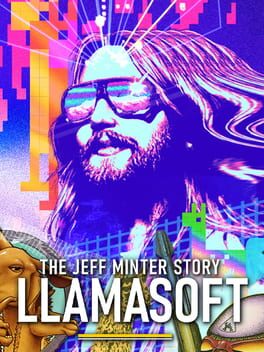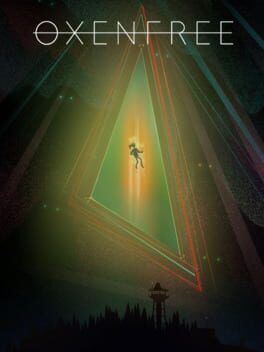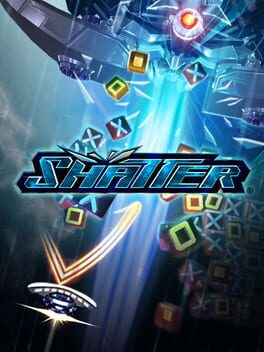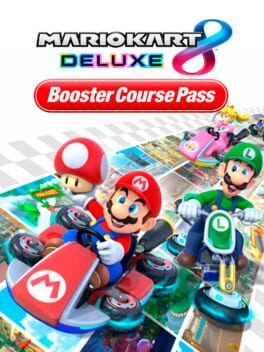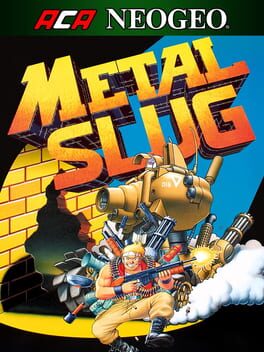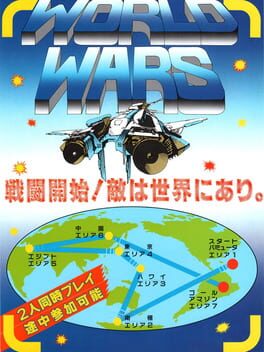done
Played a few years after finishing Remake, this was a good re-introduction to its style and mechanics. I enjoyed Yuffie and Sonon more as characters than I expected. It's a smart move to have them wander around Sector 7 in parallel to the main cast. Yuffie's urge to be a main character is a foil to Cloud, who is all anyone seems to want to talk about. The music is up to the standard of Remake, too, which means that it expands on the best soundtrack in current role playing games.
This is a rare thing: a 3D platformer that feels original. That isn't to say that it doesn't come with a bunch of influences, but the results are more than the sum of their parts. When Evening Star's ideas shine through, as in how complimentary the sound effects are to the soundtrack, or the abundant opportunities to rocket Penny forward and rapidly roll through levels, the game shines. Unfortunately, Evening Star hasn't quite figured out how to make failures fun, a problem exacerbated by glitches. I have a catalog of them after playing the game. It often felt like Penny and the levels tripped over themselves. Fortunately, the game would soon get back up, something charming would happen, and I would be back to enjoying myself.
edit: I've put up a full length review at Gamers with Glasses: https://www.gamerswithglasses.com/reviews/pennys-big-breakaway
edit: I've put up a full length review at Gamers with Glasses: https://www.gamerswithglasses.com/reviews/pennys-big-breakaway
2019
A clever puzzle game that benefits from a central core idea in its presentation of dream logic. I think the most clever thing about it isn't its range of perspective puzzles or in its frame of a dive into layers of dreams gone wrong. Instead, it's in how few pieces there are in the scenario and how well, nonetheless, its designers explore the ideas of what is possible. The deployment of sets and facades, backstages and convention halls all contribute to the idea that this is a constructed dream, rather than one of limitless possibilities. It's funny, in a way, that this dream is so limited. Ultimately, I think this contributes to the message in its finale. Even seeing it coming, it's an affecting one made more resonant by Pillow Castle's presentation.
A great collection and presentation of games, archival material, and interviews from and about Minter and Llamasoft. Digital Eclipse provided a lot of subtle improvements in this collection, like modern controls for 3D 3D, Psychedelia, and Colourspace. Minter is up front how his early games derived their gameplay from arcade hits, and how Llamasoft's early success was often made from adapting others' ideas to home computers like the Sinclair and Commodore. It's inspirational, in a way, to demonstrate how this approach provided a platform to become weirder and more experimental over the years until Llamasoft and Minter came into their own.
First, there are Camels instead of AT-ATs. Then, you play as the Camel. Then, maybe you're a kill droid protecting a family of Llamas and you are given control over what the wave structure of enemies will be. But all of that feels like prologue to me in comparison to Minter's true love of his light synthesizers. This collection ends right where today's recognizable Llamasoft begins, with Tempest 2000. There are references in some of the included video to later games like Space Giraffe, Tempest 4000, Moose Life, and Polybius, but they're not a direct part of... this part of the story. While I would have liked more of a mention of where Minter has gone since the 90s, I understand the focus of this collection and the story it tells. For that, Digital Eclipse continues their good work from Atari 50.
edit: I've put up a full-length review on Gamers with Glasses: https://www.gamerswithglasses.com/reviews/llamasoft-the-jeff-minter-story
First, there are Camels instead of AT-ATs. Then, you play as the Camel. Then, maybe you're a kill droid protecting a family of Llamas and you are given control over what the wave structure of enemies will be. But all of that feels like prologue to me in comparison to Minter's true love of his light synthesizers. This collection ends right where today's recognizable Llamasoft begins, with Tempest 2000. There are references in some of the included video to later games like Space Giraffe, Tempest 4000, Moose Life, and Polybius, but they're not a direct part of... this part of the story. While I would have liked more of a mention of where Minter has gone since the 90s, I understand the focus of this collection and the story it tells. For that, Digital Eclipse continues their good work from Atari 50.
edit: I've put up a full-length review on Gamers with Glasses: https://www.gamerswithglasses.com/reviews/llamasoft-the-jeff-minter-story
2013
Two qualities stand out in Anodyne: one, its designer's willingness to engage in symbolism and two, the quality of its mazes. Both can be hit-or-miss (hits: the red cave, apartments, and hotel; misses: the suburb, acrobats tent, endgame platforming), but I appreciate the use of 2D Zelda mechanics as a vehicle of authorial expression. There could be more connective tissue and context, but I enjoyed the open-ended, suggestive approach to story taken in most of the game. The mechanical complications of the final boss were fun and conveyed "final boss," but I found that it didn't do much to deepen the story. The ending was, somehow, just what I expected. I'm looking forward to what sounds like a more thoughtful and interesting game in the shape of its sequel.
2016
I enjoyed Oxenfree's focus on plot, character, and dialog. Chatter between characters and the smooth implementation of interruptions and overlaps is rightfully lauded. The soup of paranormal and sci-fi that makes up the plot is intriguing enough, powered by unfolding relationship dynamics and inter-character drama. For all that it has polish and ambition, though, I came away feeling like Night School played it structurally safe. It's a little too consistent to be as interesting as it could be.
2009
A brightly-lit, electro Breakout. It begins with good ideas and I enjoyed how boards encourage a mixture of classic paddle technique with the push-pull of its fans to change the arc of the ball. Unfortunately, it runs out of ideas in the middle. Two bosses are re-used with slight variations and there are few new obstacles, bricks, or board shapes in the last few levels. As a result, it seemed like the game increasingly relied on debris that knocks out the player's paddle over other challenges. I would have preferred that challenge come in the form of more interesting or complicated boards.
When it comes down to it, the new courses are excellent. Remade versions of existing Mario Kart courses are fun, too, and take advantage of shifting tracks and routes. Each lap is often different, carrying one surprise after another. This expansion doesn't do much else when it comes to the mechanics of 8D. Once again, the CPU is lacking. It's abundantly clear that it can't keep up at higher speeds and so relies on barrages of items. There are better ways of making a player feel like they have to battle to get through a race, but they're not to be found in Mario Kart.
Holds up well as an arcade game, I'm just bad at it. Beautifully detailed backgrounds and animations take some of the sting out. While I feel like there are some increasingly cheap deaths in the last couple missions (and the final boss), I'm sure I could quickly figure out more efficient runs. Even with the chaos of missions 4 and 5, it's a very readable game. Plenty of better run 'n' guns exist and better had come out by 1996, but Metal Slug's personality goes a long way.
1987
Not much quality in this vertically-scrolling shooter. The twin stick shooting comes into play only in pieces. Controls are a bit less sluggish than some, but not enough to work around how enemies drop in and fill the screen. Some homing bullets are particularly irritating. The field for movement is also oddly restricted, allowing about a third of the screen but not too far up or down as it scrolls. The more real estate an enemy takes up, the more this becomes a problem, with the boss of the Egypt level the worst offender. Music is terrible and, for some levels, seems completely out of place. If you're just looking to play through a game like this with heavy use of the rewind button, it's fine, but I can't imagine enjoying this using credits. It doesn't even get an excuse for the time in which it was released, as there were many better games of its kind in 1987.
1989
Another one that I never finished as a kid. I think that I was turned off by how the jump doesn't have the same physics as the NES games. Considering how key the jump is to Mario games, that's a big problem. It's not all bad: the fireball is pleasantly overpowered and puts the game on easy mode, but it's relatively balanced in how easy it is to lose. The two wall-scrolling shoot-em-up levels are fun, the music wrings some tunes out of the GB sound chip, and the boss gimmicks are okay.
